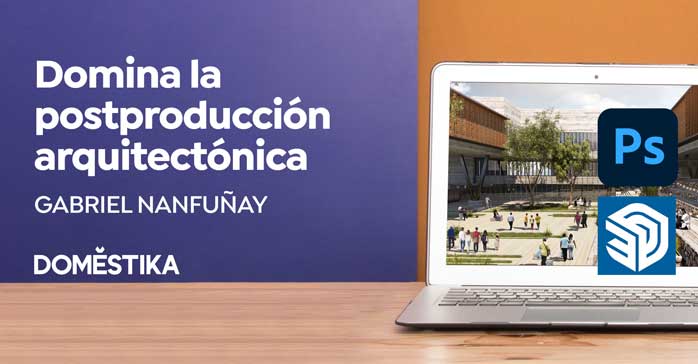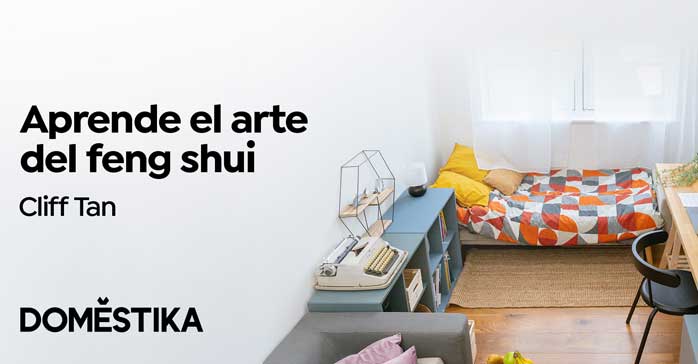Departamento D.377 (Rafaela, Pcia. de Santa Fe, Argentina) por otro estudio [oficina de arquitectos] (Arq. Pedro Frund, Arq. Cristian Perret, Arq. Mauro Williner). Una clienta, recientemente jubilada, nos plantea el desarrollo del proyecto de un departamento que le permitiese generar otro ingreso económico; a la vez que establece como condicionantes la superficie de terreno a destinar a dicho encargo y un presupuesto ajustado para ejecutarlo. Apelando a las posibilitantes del lote en esquina convencional con orientación noreste (30×10 metros) en el que actualmente vive, respetando la escala barrial y la lógica de unidades con expansión propia como un valor importante, se define ocupar los últimos 7 metros del terreno lindantes con el vecino sur, por todo su ancho, dando una parcela de 70 m2.
De este modo se plantea obtener máxima autonomía de la vivienda existente (más próxima a la esquina propiamente dicha) generándole un ingreso totalmente independiente. A su vez, aprovechando que el vecino ya ha constituido su vivienda y por ende la medianera en todo su largo, se optó por apoyarse en ella logrando protegerse del sur como orientación desfavorable y abrir los espacios de la nueva vivienda al norte. Otra de las premisas consistió en que el nuevo departamento debía respetar los árboles existentes en la vía pública (evitando tener que extraer alguno para generar el ingreso vehicular), así como también la vegetación de valor presente en el patio de la vivienda.
En cuanto al programa, el mismo se estructura en tres bandas, de anchos diversos, que albergan todas la actividades. La primera, sobre la medianera, se constituye a partir de un mueble que recorre todo el departamento y sirve de soporte a los ámbitos subyacentes de la lonja central. Finalmente al norte se localizan los espacios exteriores. Estos últimos operan como ingreso, transiciones y lugares de estar en la nueva unidad, un espacio semicubierto cumple la función de acceso, galería y cochera; al fondo del mismo un patio oficia de expansión del estar-comedor mediando entre ellos un asador de doble frente que permite ver a través de él una vez que se atraviesa el límite entre lo público y lo privado.
El parrillero marca la pausa entre semicubierto y exterior, poniendo en evidencia el ingreso al departamento en sí mismo, ubicado en medio del planteo funcional. En este punto los espacios nocturnos, más privados, se organizan hacia la calle; localizando las aberturas de modo que se conserve la intimidad de los mismo a la vez que capturan recortes de cielo, vegetación y operan como enmarque de los cambiantes fresnos americanos. Los espacios diurnos se ubican hacia el fondo en relación al patio, con el que negocian una generosa continuidad espacial haciendo partícipe al exterior en la escena cotidiana.
La formalización del proyecto apela a una paleta sencilla y reducida de elementos que se presentan sin ocultar su expresión y potencia material. Se opta por materiales de la construcción tradicional propios de la zona tal como el ladrillo visto manual cuyo módulo está presente en las proporciones espaciales y ha sido trabajado de manera que el tomado de juntas exalte la longitudinalidad de la traba produciendo una vibración en ese sentido, revoques gruesos y finos para los muros, pisos de cemento alisado manual en exteriores y techo de chapa (visto en la galería). En este campo se enfatiza el bajo mantenimiento así como la facilidad del mismo, sin perder las cualidades materiales a lo largo del tiempo.
Ficha técnica
Nombre: D.377
Ubicación: Erasmo Poggi 377, Rafaela, Pcia. de Santa Fe, Argentina
Arquitectos: otro estudio [oficina de arquitectos] (Arq. Pedro Frund, Arq. Cristian Perret, Arq. Mauro Williner)
Superficie terreno: 70 m2
Superficie cubierta: 41 m2
Superficie semicubierta: 19 m2
Año de proyecto: 2017
Año de construcción: 2017-2018
Colaboración piezas gráficas: Tomás Sola
Fotografías: Ramiro Sosa
English version
A client, recently retired, asks us to develop a project for an apartment that would allow her to generate another economic income; At the same time, she establishes as conditions the area of ??land to be allocated to said assignment and a tight budget to carry it out.
Appealing to the possibility of the conventional corner lot with northeast orientation (30x10m) in which she currently lives, respecting the neighborhood scale and the logic of units with their own expansion as an important value; it is defined to occupy the last 7 m of the land bordering the southern neighbor, throughout its width, giving a plot of 70 m2.
In this way, she plans to obtain maximum autonomy from the existing house (closer to the corner itself) generating a totally independent income. In turn, taking advantage of the fact that the neighbor has already constituted her home and therefore the dividing wall throughout its length, she opted to lean on it, managing to protect herself from the south as an unfavorable orientation and open the spaces of the new home to the north. Another of the premises was that the new department should respect the existing trees on the public highway (avoiding having to extract any to generate vehicle income), as well as the valuable vegetation present in the courtyard of the house.
As for the program, it is structured in three bands, of different widths, which house all the activities. The first, on the dividing wall, is made up of a piece of furniture that runs through the entire department and serves as a support for the underlying areas of the central fish market. Finally to the north the exterior spaces are located. The latter operate as entrance, transitions and places of being in the new unit, a semi-covered space fulfills the function of access, gallery and garage.
At the end of it, a patio acts as an expansion of the living-dining room, mediating between them a double-fronted grill that allows you to see through it once the boundary between public and private is crossed. The barbecue marks the pause between semi-covered and outside, highlighting the entrance to the apartment itself, located in the middle of the functional plan. At this point, the more private nocturnal spaces are organized towards the street; locating the openings so that their privacy is preserved while capturing cuttings of sky, vegetation and operating as a frame for the changing American ash trees. The daytime spaces are located towards the back in relation to the patio, with which they negotiate a generous spatial continuity, allowing the outside to participate in the daily scene.
The formalization of the project appeals to a simple and reduced palette of elements that are presented without hiding their expression and material power. Traditional construction materials typical of the area are chosen, such as manual exposed brick, whose module is present in spatial proportions and has been worked in such a way that the joint taken enhances the longitudinality of the lock, producing a vibration in that sense. thick and thin plasters for the walls, exterior hand-smoothed concrete floors and sheet metal roof (seen in the gallery). In this field, low maintenance is emphasized as well as its ease, without losing the material qualities over time.


![Departamento D.377 / otro estudio [oficina de arquitectos]](https://www.arquimaster.com.ar/web/wp-content/uploads/2021/06/departamento_d377_slide.jpg)
![Departamento D.377 / otro estudio [oficina de arquitectos]](https://www.arquimaster.com.ar/web/wp-content/uploads/2021/06/departamento_d377_1-150x150.jpg)
![Departamento D.377 / otro estudio [oficina de arquitectos]](https://www.arquimaster.com.ar/web/wp-content/uploads/2021/06/departamento_d377_2-150x150.jpg)
![Departamento D.377 / otro estudio [oficina de arquitectos]](https://www.arquimaster.com.ar/web/wp-content/uploads/2021/06/departamento_d377_3-150x150.jpg)
![Departamento D.377 / otro estudio [oficina de arquitectos]](https://www.arquimaster.com.ar/web/wp-content/uploads/2021/06/departamento_d377_4-150x150.jpg)
![Departamento D.377 / otro estudio [oficina de arquitectos]](https://www.arquimaster.com.ar/web/wp-content/uploads/2021/06/departamento_d377_5-150x150.jpg)
![Departamento D.377 / otro estudio [oficina de arquitectos]](https://www.arquimaster.com.ar/web/wp-content/uploads/2021/06/departamento_d377_6-150x150.jpg)
![Departamento D.377 / otro estudio [oficina de arquitectos]](https://www.arquimaster.com.ar/web/wp-content/uploads/2021/06/departamento_d377_7-150x150.jpg)
![Departamento D.377 / otro estudio [oficina de arquitectos]](https://www.arquimaster.com.ar/web/wp-content/uploads/2021/06/departamento_d377_8-150x150.jpg)
![Departamento D.377 / otro estudio [oficina de arquitectos]](https://www.arquimaster.com.ar/web/wp-content/uploads/2021/06/departamento_d377_9-150x150.jpg)
![Departamento D.377 / otro estudio [oficina de arquitectos]](https://www.arquimaster.com.ar/web/wp-content/uploads/2021/06/departamento_d377_10-150x150.jpg)
![Departamento D.377 / otro estudio [oficina de arquitectos]](https://www.arquimaster.com.ar/web/wp-content/uploads/2021/06/departamento_d377_11-150x150.jpg)
![Departamento D.377 / otro estudio [oficina de arquitectos]](https://www.arquimaster.com.ar/web/wp-content/uploads/2021/06/departamento_d377_12-150x150.jpg)
![Departamento D.377 / otro estudio [oficina de arquitectos]](https://www.arquimaster.com.ar/web/wp-content/uploads/2021/06/departamento_d377_13-150x150.jpg)
![Departamento D.377 / otro estudio [oficina de arquitectos]](https://www.arquimaster.com.ar/web/wp-content/uploads/2021/06/departamento_d377_14-150x150.jpg)
![Departamento D.377 / otro estudio [oficina de arquitectos]](https://www.arquimaster.com.ar/web/wp-content/uploads/2021/06/departamento_d377_15-150x150.jpg)
![Departamento D.377 / otro estudio [oficina de arquitectos]](https://www.arquimaster.com.ar/web/wp-content/uploads/2021/06/departamento_d377_16-150x150.jpg)
![Departamento D.377 / otro estudio [oficina de arquitectos]](https://www.arquimaster.com.ar/web/wp-content/uploads/2021/06/departamento_d377_17-150x150.jpg)
![Departamento D.377 / otro estudio [oficina de arquitectos]](https://www.arquimaster.com.ar/web/wp-content/uploads/2021/06/departamento_d377_18-150x150.jpg)
![Departamento D.377 / otro estudio [oficina de arquitectos]](https://www.arquimaster.com.ar/web/wp-content/uploads/2021/06/departamento_d377_19-150x150.jpg)
![Departamento D.377 / otro estudio [oficina de arquitectos]](https://www.arquimaster.com.ar/web/wp-content/uploads/2021/06/departamento_d377_20-150x150.jpg)
![Departamento D.377 / otro estudio [oficina de arquitectos]](https://www.arquimaster.com.ar/web/wp-content/uploads/2021/06/departamento_d377_21-150x150.jpg)
![Departamento D.377 / otro estudio [oficina de arquitectos]](https://www.arquimaster.com.ar/web/wp-content/uploads/2021/06/departamento_d377_22-150x150.jpg)
![Departamento D.377 / otro estudio [oficina de arquitectos]](https://www.arquimaster.com.ar/web/wp-content/uploads/2021/06/departamento_d377_23-150x150.jpg)
![Departamento D.377 / otro estudio [oficina de arquitectos]](https://www.arquimaster.com.ar/web/wp-content/uploads/2021/06/departamento_d377_24-150x150.jpg)
![Departamento D.377 / otro estudio [oficina de arquitectos]](https://www.arquimaster.com.ar/web/wp-content/uploads/2021/06/departamento_d377_25-150x150.jpg)
![Departamento D.377 / otro estudio [oficina de arquitectos]](https://www.arquimaster.com.ar/web/wp-content/uploads/2021/06/departamento_d377_26-150x150.jpg)
![Departamento D.377 / otro estudio [oficina de arquitectos]](https://www.arquimaster.com.ar/web/wp-content/uploads/2021/06/departamento_d377_27-150x150.jpg)

